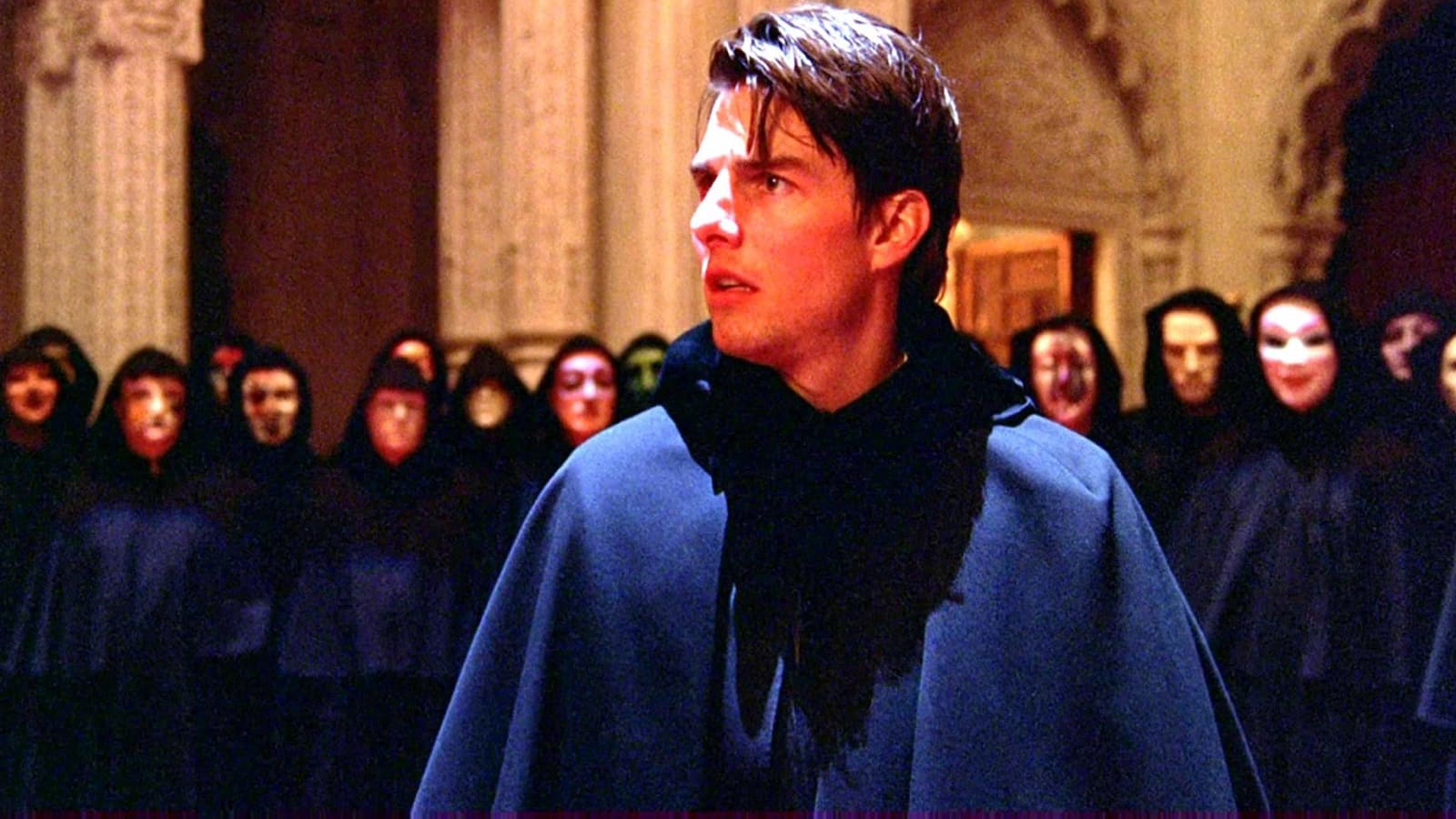
Stanley Kubrick's hard out with "Eyes Wide Shut"
Stanley Kubrick’s “Eyes Wide Shut” was already the most eagerly anticipated movie of whatever year it would eventually be released when it began principal photography in November of 1996. It was the maestro’s first film in a decade — a studio-backed adaptation of Arthur Schnitzler’s "Traumnovelle," starring the most famous married acting couple on the planet. Little was known outside of that.
When the production stretched on into 1998, cinephiles excitedly speculated that Kubrick was constructing his pièce de résistance. The meticulous filmmaker was renowned for flattening out performances via myriad takes; even though he’d fired major talents like Harvey Keitel and Jennifer Jason Leigh, cinephiles were certain Kubrick was on his game. And once he finished this film, he would produce his long-gestating opus, "A.I.," ascend to heaven and sit at the right hand of God.
Alas, God had other plans.
Kubrick died six days after showing his alleged "final cut" of "Eyes Wide Shut" to Warner Bros. executives in 1999. The impact of Kubrick’s death cannot be overstated. He was 70. He was considered by many to be the world’s greatest living filmmaker. His films forecast the times. "Dr. Strangelove" or: "How I Learned to Stop Worrying and Love the Bomb" provided darkly comedic perspective on the Cold War. "2001: A Space Odyssey" hurtled stargazing viewers past the moon to a great intergalactic enlightenment. "The Shining" exploded the potential of the steadicam, allowing filmmakers to glide without laying dolly tracks. And now he was gone.
This was the hardest of hard cuts, but that’s how Kubrick operated. His films left you puzzled, devastated and rarely exhilarated. ("2001" may be his most hopeful film, but what the birth of the Star Child portends is left to the viewer’s interpretation.) Kubrick knocked your perspective sideways; you emerged from each film questioning your understanding of the world. And suddenly, without warning (Kubrick was an intensely private person, so little was known about his health), "Eyes Wide Shut" was it: one last tango with the maestro.
July 16 was an odd landing spot for "Eyes Wide Shut." Though the film boasted maximum marquee appeal with Tom Cruise and Nicole Kidman, it was still a 159-minute erotic drama; releasing it in the middle of summer had audiences expecting something a little more momentous than a sexually frustrated doctor wandering into the night to almost, but not quite, cheat on his wife. But fidelity, in all its unsexy glory, was Kubrick’s theme. This wasn’t "Fatal Attraction." It was a sober-minded exploration of what it means to be married.
Audiences abhorred "Eyes Wide Shut." It received a "D-" CinemaScore and flatlined commercially after racking up a $21 million opening weekend. Critics were mixed, but this was always the way with Kubrick. Entertainment Weekly’s generally perceptive Owen Gleiberman awarded the film a C, bemoaning its artifice as if Kubrick had somehow misjudged his aesthetic approach. This became the popular knock on "Eyes Wide Shut": It was a vacant, strangely undercooked swan song. Surely Kubrick had grander ambitions than this before he shuffled off.
Though Kubrick’s closest collaborators insist this was the final cut, there is an unusual raggedness here and there. The abrupt cut out of the "Baby Did a Bad Bad Thing" sequence has always felt off, and there are some process shots, particularly during Cruise’s nighttime peregrinations, that could use further tweaking.
But aesthetically this was a Kubrick movie through and through. Airless? Absolutely. But claustrophobia was his thing. He framed films so precisely and so squarely — so they’d appear on 4x3 televisions in the correct aspect ratio — that you assumed everything in front of the camera was the whole world. Kubrick was a painter. This is why he peaked with "Barry Lyndon": He finally hit upon a subject that perfectly expressed his bemused nihilism. He trapped Ryan O’Neal, just as he did with Cruise in "Eyes Wide Shut." Interestingly, the only actor who seems poised to burst through the frame in any of his movies is Nicole Kidman. Perhaps Kubrick got more than he bargained for with her. Or maybe he saw that she was always going to kick rocks on Cruise, who was as controlling emotionally as Kubrick was cinematically, and let her taunt the bastard three years early. She is magnificent in the movie — her bedroom monologue should be studied by aspiring performers, regardless of gender. That’s how it’s done.
The critical consensus turned on "Eyes Wide Shut" when Martin Scorsese declared it one of the best films of the 1990s while appearing on "Roger Ebert & the Movies." For cinephiles, this was like Marshall McLuhan stepping out from behind the placard in "Annie Hall" to disabuse the blowhard holding forth on his own writing. The otherworldly presentation of Greenwich Village was entirely intentional. Kubrick wasn’t a literalist. The film was an erotic fever dream experienced by two adults on the verge of rending their union asunder. That critics couldn’t rouse themselves to peer deeper into the movie was disappointing, but at least the master’s last film was receiving its due.
Yet when you watch Scorsese’s appreciation of "Eyes Wide Shut," you can sense a profound sadness. This is it. No one would ever be able to make a film this inscrutable at a fully financed studio level ever again. Kubrick worked within a system, expanded it and, with his final movie, shattered it. Terry Semel, Kubrick’s last corporate champion, resigned from Warner Bros. in July 1999, and he evidently intended to hand off "A.I." to Steven Spielberg all along. Kubrick saw the end coming. He knew this was going to be a hard out. That he ended on the hardest expletive in the English language might be the greatest mic drop in film history.
More must-reads:
Trending in Entertainment
Customize Your Newsletter
 +
+
Get the latest news and rumors, customized to your favorite sports and teams. Emailed daily. Always free!

